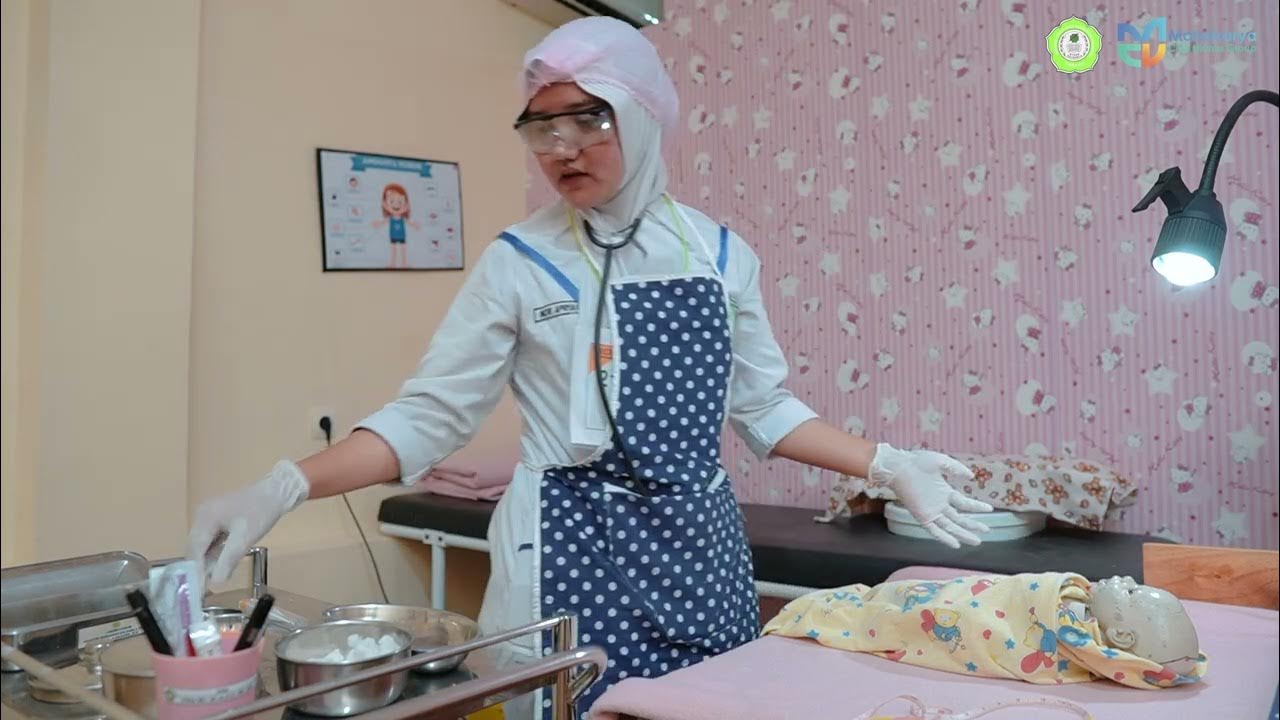Babygram X-ray ll positioning of babygram X-ray ll How to perform Babygram X-ray ll
Summary
TLDRThis video explains the process of a Baby Gram, a radiographic procedure performed on newborns to detect congenital and genetic defects, as well as other pathological conditions. It involves taking X-rays of various body parts such as the chest, abdomen, shoulders, hips, arms, legs, and skull. The procedure requires careful positioning of the baby in a supine position and ensures correct side identification. The use of rare-earth elements in the X-ray screen enhances the efficiency of the process, reducing exposure factors and minimizing the patient's radiation dose. The video concludes with a focus on the benefits of this diagnostic method.
Takeaways
- 😀 Baby Gram is a radiographic procedure for newborns that helps detect congenital and genetic defects, as well as other pathological conditions.
- 😀 The procedure involves taking x-rays of various parts of the newborn's body, including the chest, abdomen, shoulders, hips, arms, legs, and skull.
- 😀 The baby should be placed in a supine position during the procedure to ensure proper alignment and exposure.
- 😀 Correct identification of the patient's right and left sides is crucial for accurate imaging.
- 😀 It is important to use appropriate exposure techniques to minimize blurring in the x-ray images.
- 😀 Rare earth elements such as cadmium oxide and lanthanum oxybromide are used in the procedure’s intensifying screens.
- 😀 These rare earth elements have a high atomic number, which contributes to higher absorption and conversion efficiencies in the imaging process.
- 😀 Higher conversion efficiency means that x-ray photons are more effectively converted into light photons, which reduces the need for excessive exposure factors.
- 😀 As a result of improved conversion efficiency, patient exposure to radiation can be minimized.
- 😀 The use of rare earth elements enhances the overall efficiency of the radiographic procedure, leading to better quality images with lower radiation exposure.
- 😀 This procedure is critical for detecting birth defects in newborns and plays a vital role in early diagnosis and treatment.
Q & A
What is a Baby Gram procedure?
-A Baby Gram is a radiographic procedure used to assess newborns for congenital defects, genetic conditions, and other pathological conditions by taking images of the baby's body.
Which parts of the body are imaged during the Baby Gram procedure?
-The Baby Gram procedure includes imaging of the chest, abdomen, shoulders, hips, arms, both legs, and skull of the newborn.
What is the positioning of the newborn for a Baby Gram?
-The newborn is placed in a supine position, ensuring the interior superior iliac spine is at an equal distance from the landmark for proper side identification.
Why is it important to position the newborn correctly during the Baby Gram?
-Proper positioning is crucial for accurately identifying the right or left side of the baby and for minimizing the risk of errors during the imaging process.
What is the role of rare earth elements in the Baby Gram procedure?
-Rare earth elements like cerium oxide and lanthanum oxide are used in the intensifying screens, which help improve the efficiency of converting X-ray photons into light photons, reducing the exposure factors needed.
What are some examples of rare earth elements used in Baby Gram?
-Examples of rare earth elements used in the procedure include gadolinium, lanthanum, and cerium.
Why is a short exposure technique important in Baby Gram?
-A short exposure technique is important to avoid X-ray blurring, ensuring that clear images are produced without unnecessary radiation exposure to the newborn.
What is the significance of using high atomic number materials like rare earth elements in the Baby Gram?
-Materials with a high atomic number, like rare earth elements, offer better absorption efficiency and conversion efficiency, which results in more effective X-ray photon conversion and reduced radiation exposure.
How does the use of rare earth elements affect patient radiation exposure?
-Using rare earth elements in the procedure helps to increase the conversion efficiency, which means fewer X-ray photons are needed, reducing the overall radiation exposure to the patient.
What is the main goal of the Baby Gram procedure?
-The main goal of the Baby Gram procedure is to identify congenital defects, genetic abnormalities, and other pathological conditions in newborns through detailed radiographic imaging.
Outlines

This section is available to paid users only. Please upgrade to access this part.
Upgrade NowMindmap

This section is available to paid users only. Please upgrade to access this part.
Upgrade NowKeywords

This section is available to paid users only. Please upgrade to access this part.
Upgrade NowHighlights

This section is available to paid users only. Please upgrade to access this part.
Upgrade NowTranscripts

This section is available to paid users only. Please upgrade to access this part.
Upgrade NowBrowse More Related Video

10 Interpretasi Radiografi Slag Root

Ujian OSCE Stase 5 - Pemeriksaan Fisik Bayi Baru Lahir

Cardiovascular Pathology - Heart Disease

About Lulu and Nana: Twin Girls Born Healthy After Gene Surgery As Single-Cell Embryos

Heart diseases in pregnancy | Obstetrics | Med Vids made simple

Macam-macam NDT (Non Destructive Test)
5.0 / 5 (0 votes)